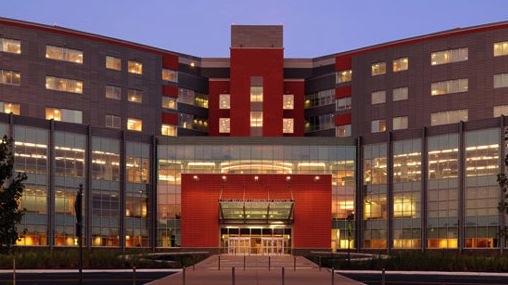The Department of Defense has released the findings of an independent report on energy efficiency and sustainability standards used by the Pentagon for military construction. The report strongly affirmed the value of LEED-certified high performing buildings to America’s military and U.S. taxpayers.
The study, conducted by the National Research Council, considered only energy efficiency. It recommended that the DoD continue to require new buildings or major renovations to be designed to achieve at least LEED Silver or the equivalent.
Roger Platt, Senior Vice President of Global Policy and Law at the U.S. Green Building Council, says, “LEED has played a significant role in reducing energy and water bills in public sector buildings across the country, saving taxpayers money and contributing to the nation’s security. This important new independent study from the National Research Council concludes that the LEED green building certification program should continue to be used in Defense Department buildings to advance energy efficiency in construction and reduce operational costs. Using LEED at Pentagon installations is a win-win proposition for the country and for the military personnel these buildings serve."
(http://www8.nationalacademies.org/onpinews/newsitem.aspx?RecordID=18282&utm_source=Press+Releases&utm_campaign=5fd1d3641e-Direct_PR_Military_Facilities2_15_2013&utm_medium=email)
Related Stories
Architects | May 20, 2016
NCARB survey indicates continued growth of U.S. architects
The number of U.S. architects surpassed 110,000 in 2015, a 2% increase from the previous year.
Multifamily Housing | May 19, 2016
Architect Jean Nouvel designs flood-resilient Monad Terrace in Miami Beach
A man-made lagoon with lush vegetation at the base of the complex is expected to adapt to climate change and rising sea levels.
Building Team Awards | May 19, 2016
Chinatown library unites and serves two emerging Chicago neighborhoods
The 16,000-sf, pebble-shaped Chinatown Branch Library was built at the intersection of new and old Chinatown neighborhoods. The goal is for the building to unite the communities and serve as a catalyst for the developing area.
Building Team Awards | May 19, 2016
NYC subway station lights the way for 300,000 riders a day
Fulton Center, which handles 85% of the riders coming to Lower Manhattan, is like no other station in the city’s vast underground transit web—and that’s a good thing.
Market Data | May 17, 2016
Modest growth for AIA’s Architecture Billings Index in April
The American Institute of Architects reported the April ABI score was 50.6, down from the mark of 51.9 in the previous month. This score still reflects an increase in design services.
Architects | May 16, 2016
AIA and HOK partner to advance Design and Health Research Consortium
The groups' key priority is to identify and develop practice-focused opportunities for funded research, publications, and tools in the area of design and public health.
Senior Living Design | May 16, 2016
Perkins Eastman releases white paper on biophilic design in senior living
The paper highlights some of the firm's top projects that feature biophilic design, a sustainable architecture strategy that connects people with nature.
Architects | May 16, 2016
3 strategies to creating environments that promote workplace engagement
VOA's Pablo Quintana writes that the industry is looking for ways to increase engagement through a mix of spaces suited to employees' desire for both privacy and connection.
Architects | May 11, 2016
AIA to create a resilience curriculum for architects
The program will teach resilient design and decision-making on hazard mitigation, climate adaptation and community resilience.
Retail Centers | May 10, 2016
5 factors guiding restaurant design
Restaurants are more than just places to eat. They are comprising town centers and playing into the future of brick-and-mortar retail.

















